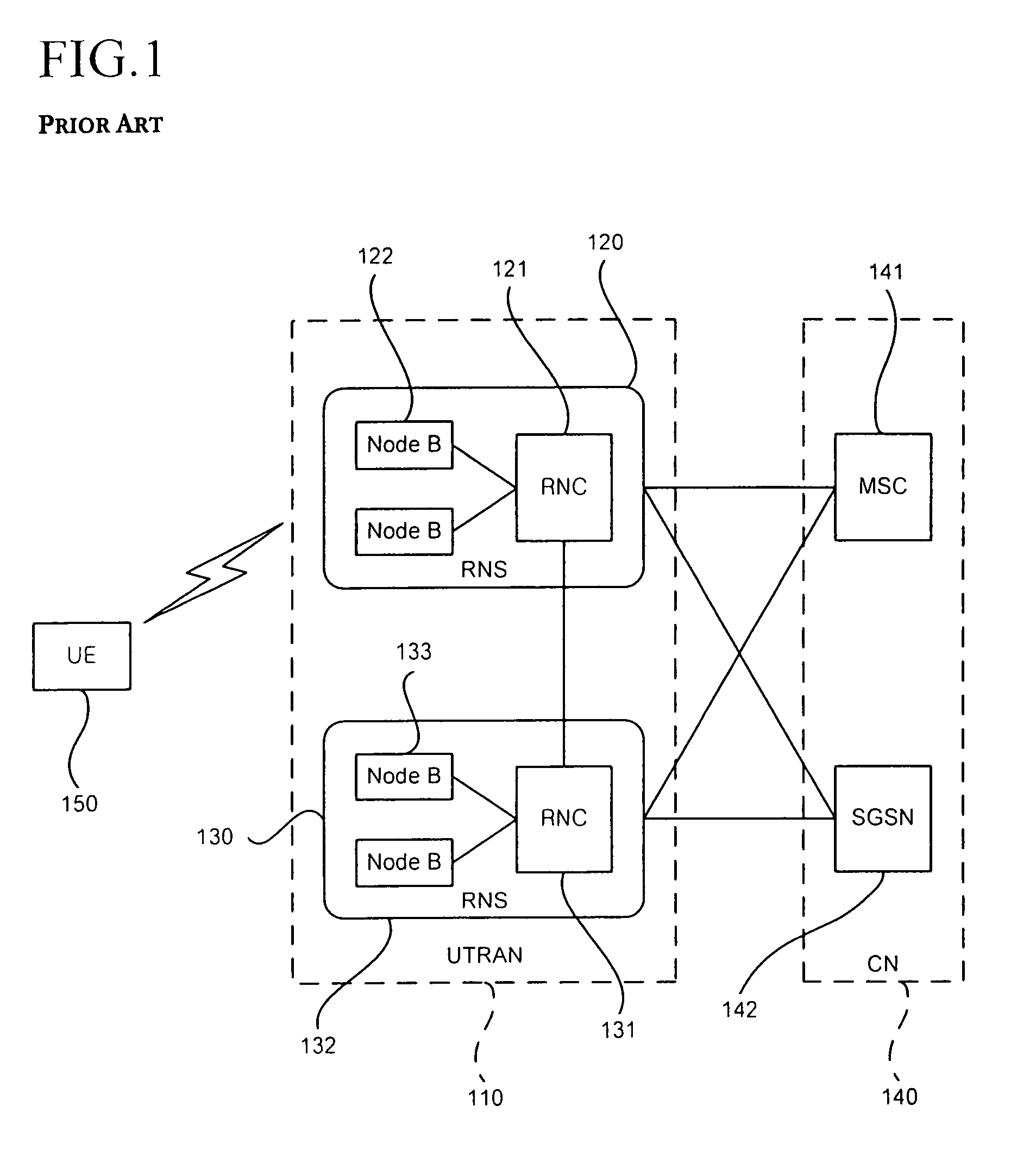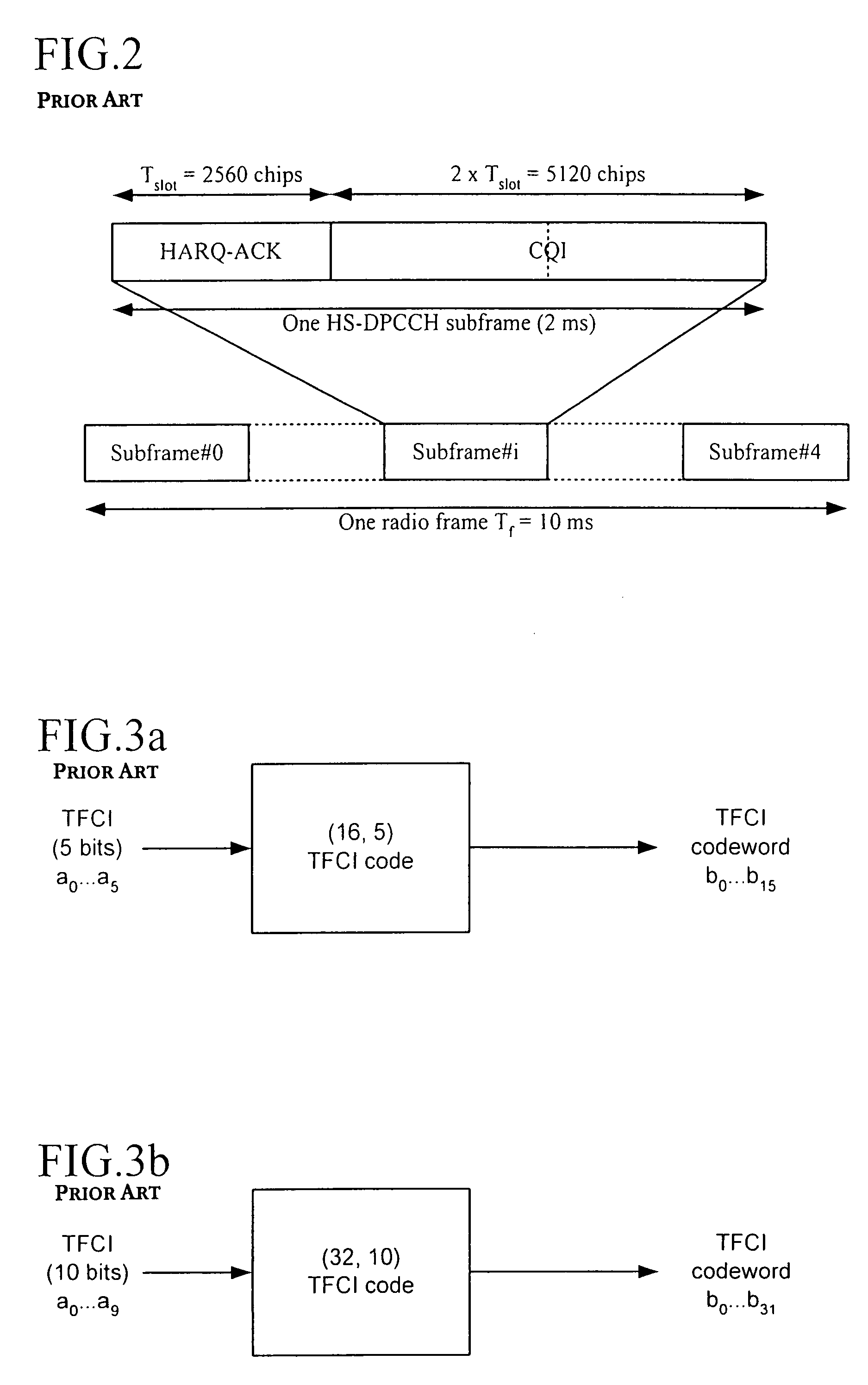CQI coding method for HS-DPCCH
a coding method and coding method technology, applied in the field of reliable uplink channel quality information coding method for hs-dpcch, can solve the problems of increasing system capacity, coding schemes with trade-offs between ber and unequal error protection, and achieve the effect of maximizing system throughpu
- Summary
- Abstract
- Description
- Claims
- Application Information
AI Technical Summary
Benefits of technology
Problems solved by technology
Method used
Image
Examples
first embodiment
[0073]FIG. 7a is a block diagram illustrating an encoder for generating (20, 5) code according to the present invention and FIG. 7b is a table for illustrating how the encoder of FIG. 7a generate the (20, 5) code.
[0074]Referring to FIG. 7a and FIG. 7b, once 5 information bits are inputted, the encoder linearly combines the information bits with basis sequences so as to generate a (32, 5) expurgated TFCI code. The expurgated TFCI code of 32 bit length is punctured by 13 bits in a puncturing pattern (0, 2, 4, 5, 6, 8, 9, 10, 11, 12, 13, 14, and 30th bits) and the 31st bit is repeated one time such that the code word of 20 bit length is obtained. The basis sequences are Mi,0, Mi,1, Mi,2, Mi,3, Mi,4. The basis sequences generated according to the first embodiment are as following in table 4. In other aspect of the first embodiment is to construct basis sequences by extending from (16, 5) TFCI code to the basis sequence of table 4.
[0075]
TABLE 4iMi,0Mi,1Mi,2Mi,3Mi,4 010001...................
second embodiment
[0082]FIG. 8a is a block diagram illustrating an encoder for generating (20, 5) code according to the present invention and FIG. 8b is a table for illustrating how the encoder of FIG. 8a generate the (20, 5) code.
[0083]Referring to FIG. 8a and FIG. 8b, the encoder linearly combines 5 inputted information bits with basis sequences so as to generate a (32, 5) expurgated TFCI code. The expurgated TFCI code of 32 bit length is punctured by 14 bits in a puncturing pattern (0, 1, 2, 4, 5, 6, 8, 9, 10, 11, 12, 13, 14, and 30th bits) and the 31st bit is repeated two times such that the code word of 20 bit length is obtained. The basis sequences generated according to the second embodiment of the present invention are as following in table 5. In other aspect of the second embodiment is to construct basis sequences by extending from (16, 5) TFCI code to the basis sequence of table 5.
[0084]
TABLE 5iMi,0Mi,1Mi,2Mi,3Mi,4 010001..................15000011600001170000118000101900100
[0085]Each of the...
third embodiment
[0091]FIG. 9a is a block diagram illustrating an encoder for generating (20, 5) code according to the present invention and FIG. 9b is a table for illustrating how the encoder of FIG. 9a generate the (20, 5) code.
[0092]Referring to FIG. 9a and FIG. 9b, the encoder linearly combines 5 inputted information bits with basis sequences so as to generate a (32, 5) expurgated TFCI code. The expurgated TFCI code of 32 bit length is punctured by 16 bits in a puncturing pattern (0, 1, 2, 3, 4, 5, 6, 7, 8, 9, 10, 11, 12, 13, 14, and 30th bits) in order to maximize the system throughput and the 31st bit is repeated 4 times in order to maximize the system throughput such that the code word of 20 bit length is obtained. The basis sequences generated according to the third embodiment of the present invention are as following in table 6.
[0093]
TABLE 6iMi,0Mi,1Mi,2Mi,3Mi,4 010001..................15000011600001170000118000011900001
[0094]Each of the basis sequences according to the third embodiment can...
PUM
 Login to View More
Login to View More Abstract
Description
Claims
Application Information
 Login to View More
Login to View More - R&D
- Intellectual Property
- Life Sciences
- Materials
- Tech Scout
- Unparalleled Data Quality
- Higher Quality Content
- 60% Fewer Hallucinations
Browse by: Latest US Patents, China's latest patents, Technical Efficacy Thesaurus, Application Domain, Technology Topic, Popular Technical Reports.
© 2025 PatSnap. All rights reserved.Legal|Privacy policy|Modern Slavery Act Transparency Statement|Sitemap|About US| Contact US: help@patsnap.com



